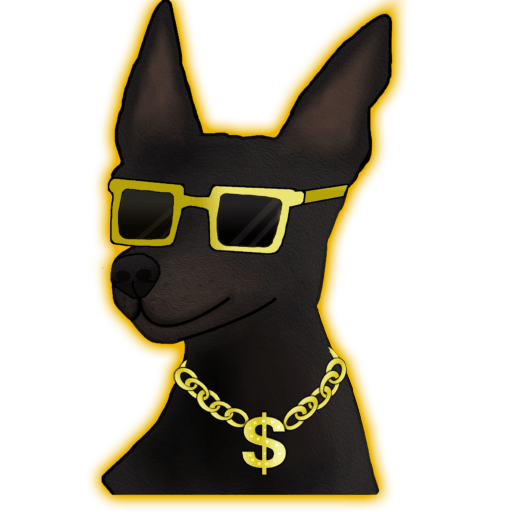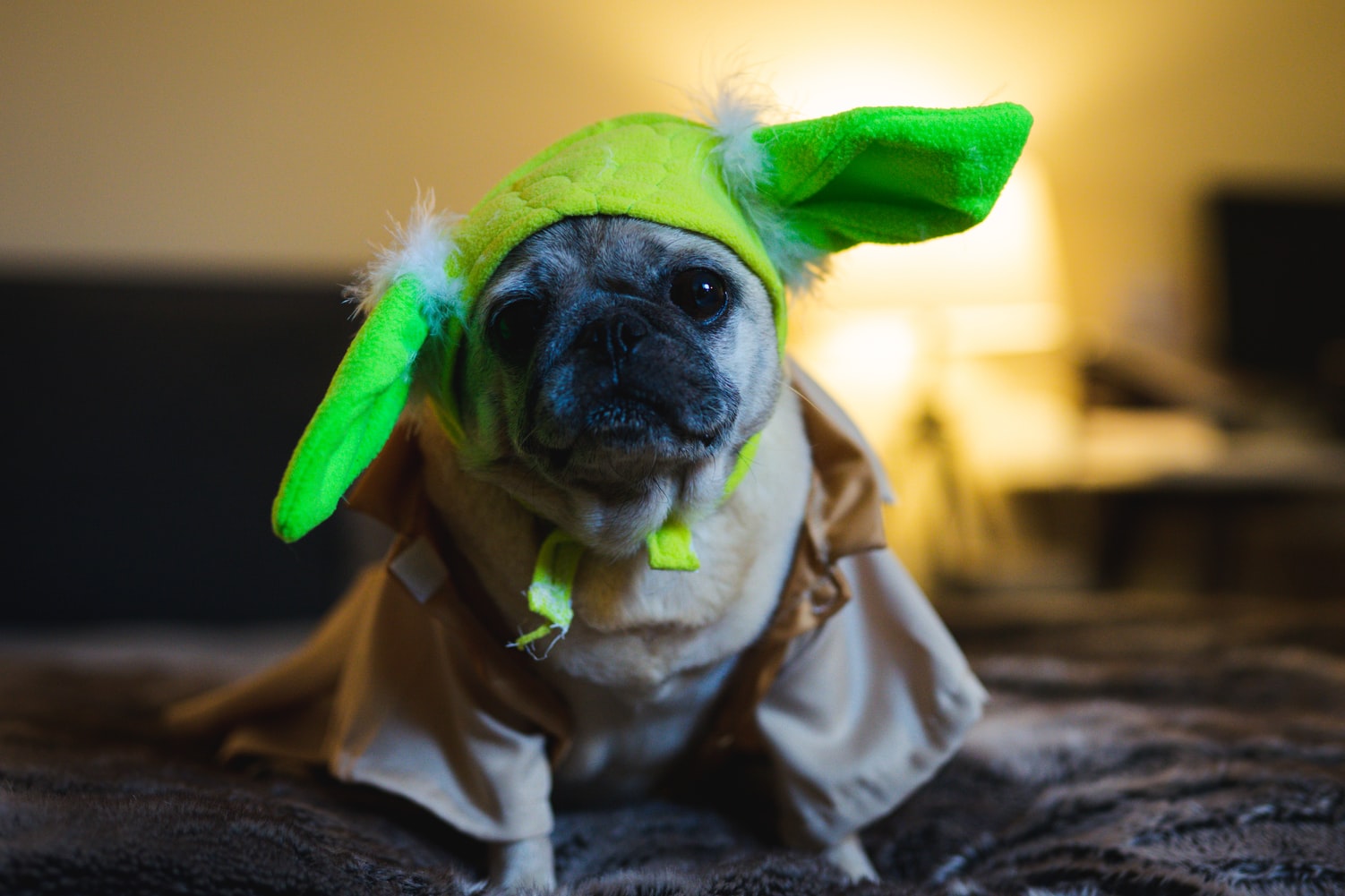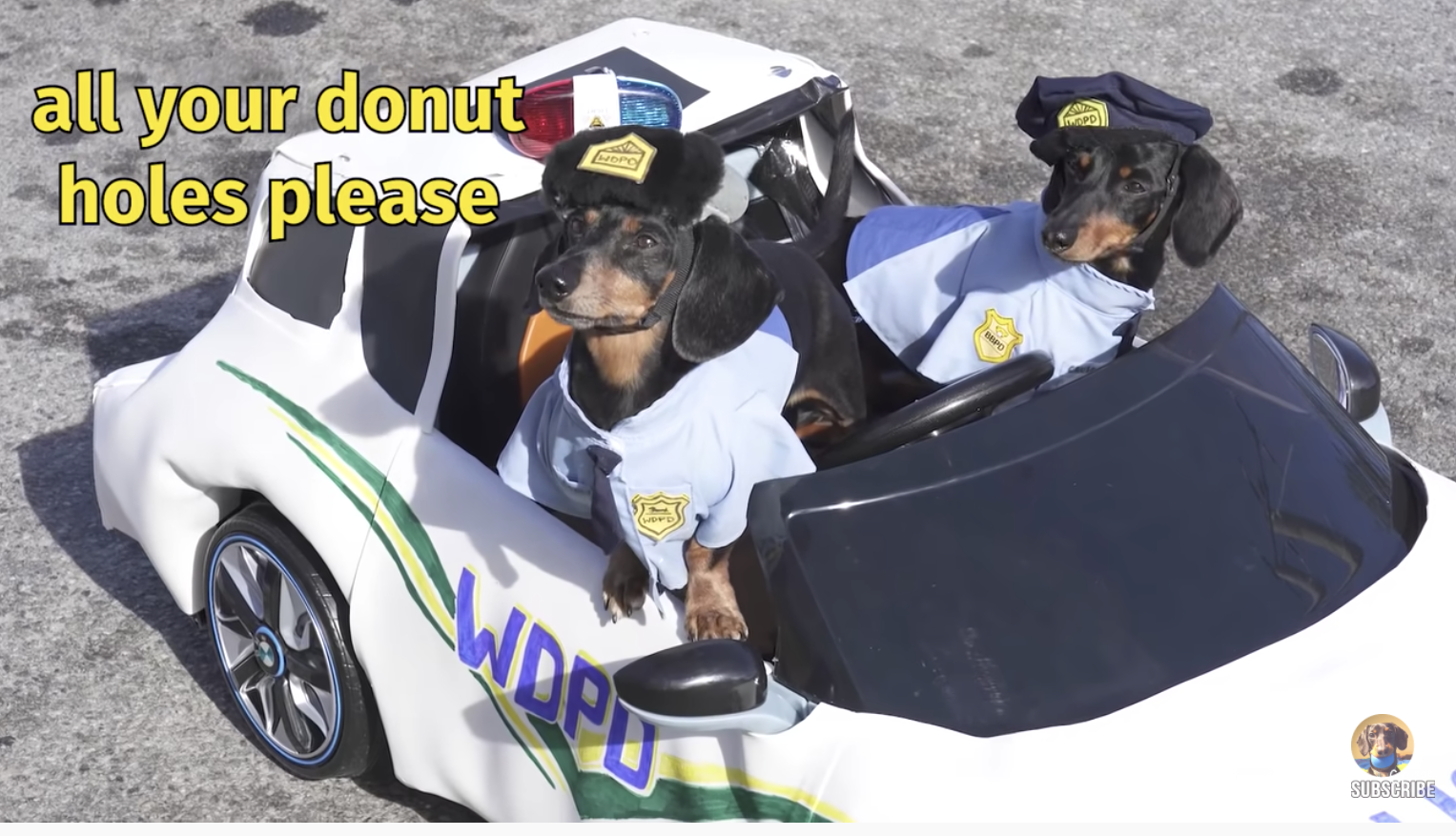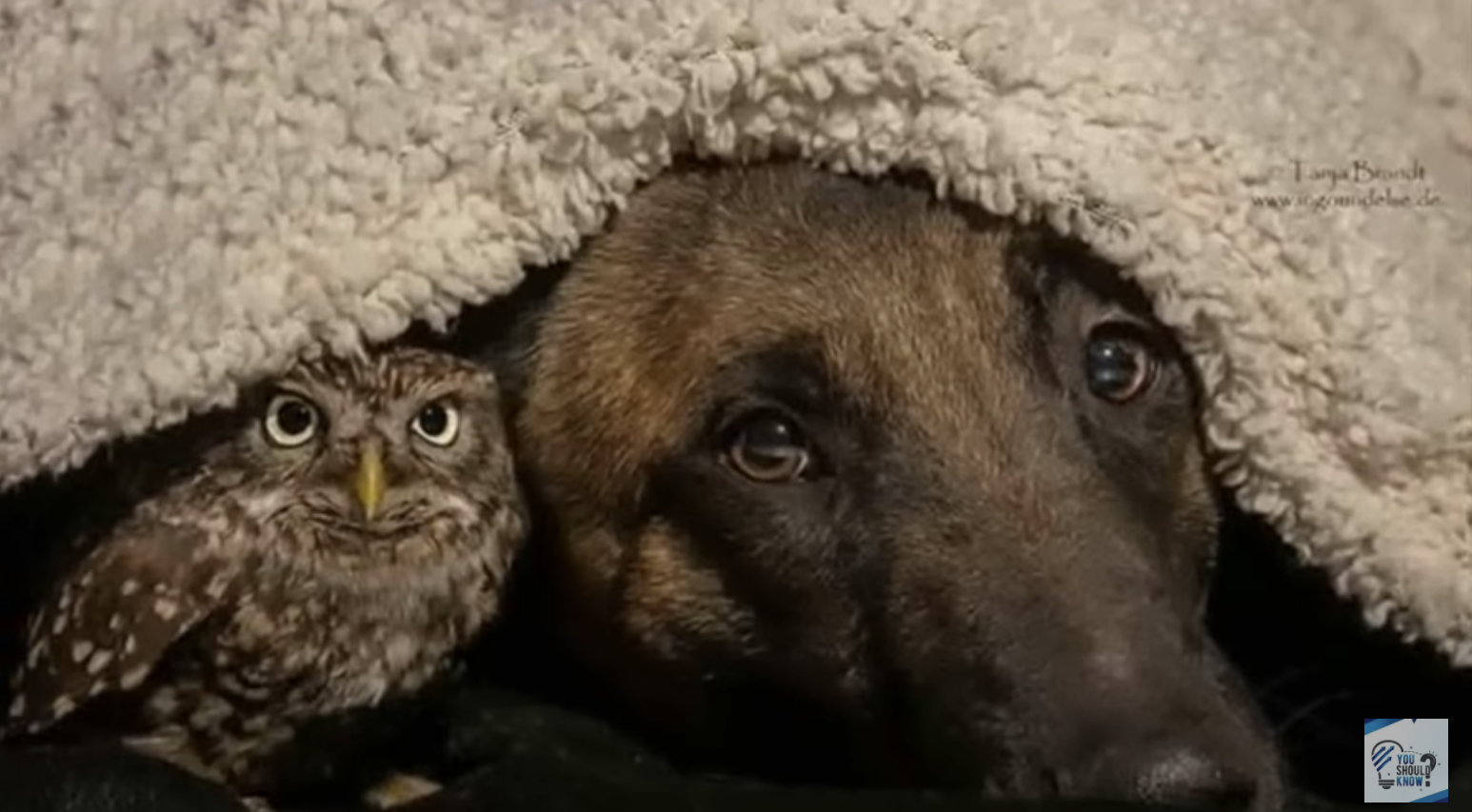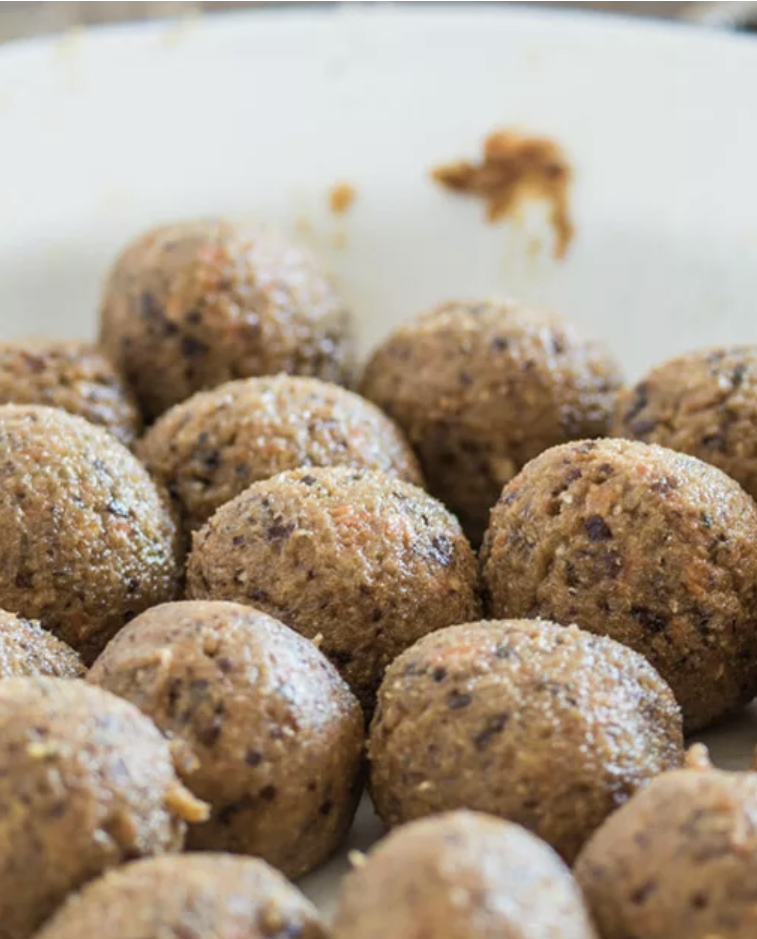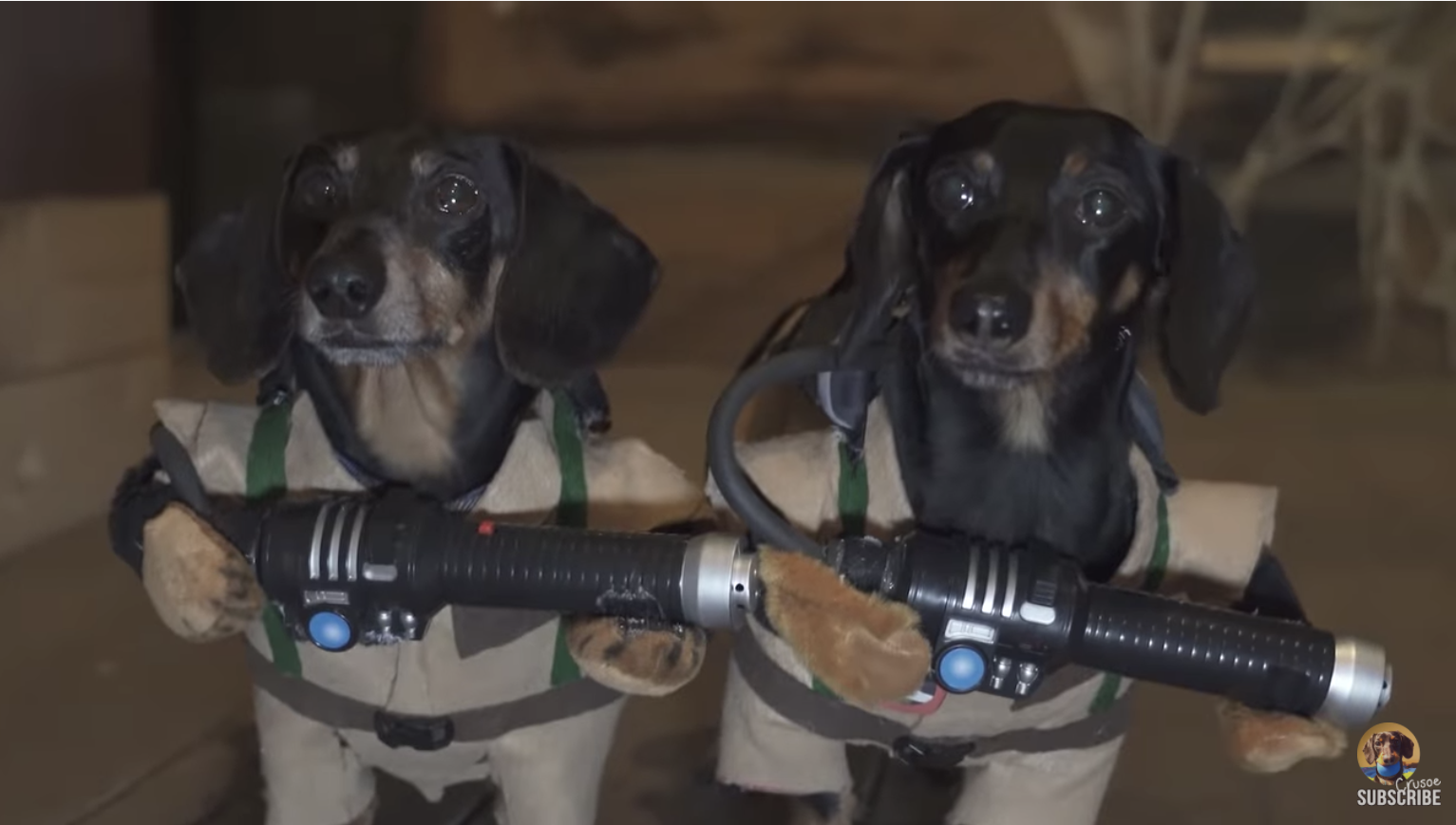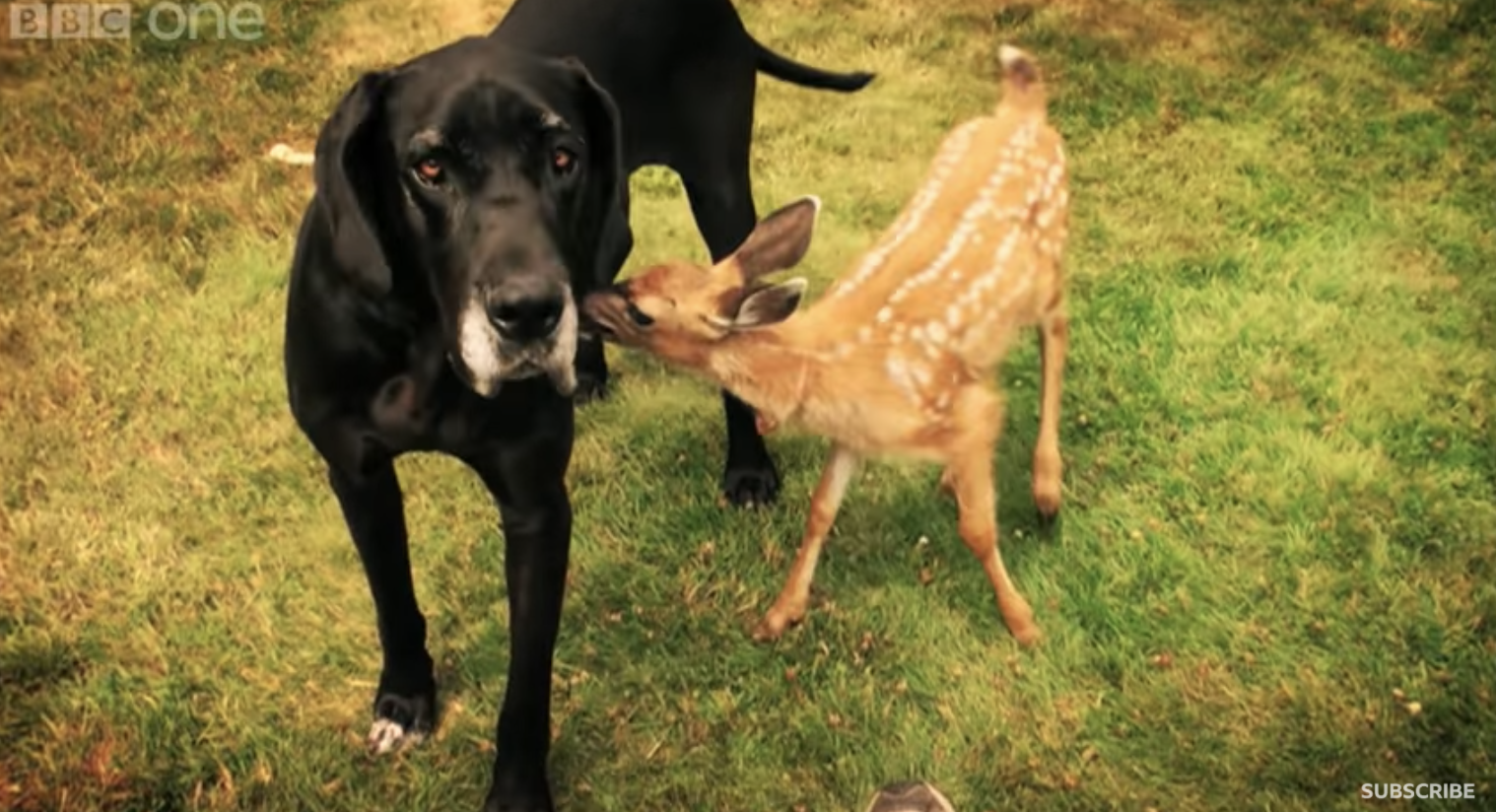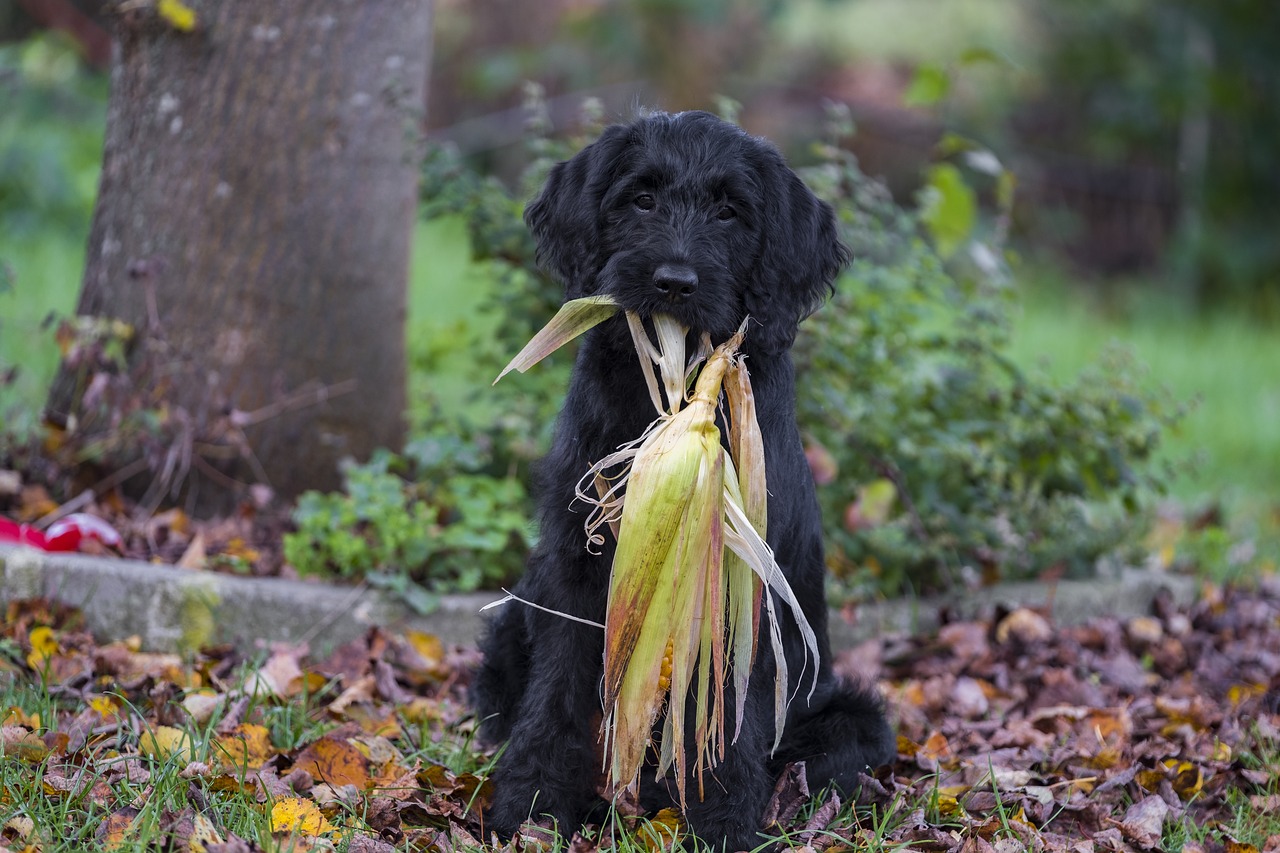
The summer heat is setting in and you’re firing up the BBQ.
While the flavors are traveling through the air, of course, Fido catches a whiff and sits near.
When everyone finally sits down to eat, it’s only right that he enjoys something delicious too.
Instead of a processed dog bone, why not a corn cob, you may think. Little do you know that could actually kill him.
In this post, we’re discussing which corn products are ok and not ok for dogs. While corn cobs present a life-threatening risk, corn kernels, canned corn and corned tortillas are unlikely to do harm in small quantities. But does that mean they’re healthy? Are they a good treat to give your dog? Read on to find out.
Note: This is not medical advice. You should always contact your vet before introducing your dog a new food. Seek immediate medical attention if your dog is experiencing a severe allergic reaction, choking or any other life-threatening complication.
Can Dogs Eat Corn?
The short answer is that dogs can typically eat some forms of corn in moderation. Although not the healthiest food to give your dog as a snack, it usually won’t do any harm. The exception here corn cobs, which can pose an extreme, life-threatening choking hazard. If you’re thinking of giving your dog a product made with corn, you’ll also need to check the other ingredients and whether those are safe too.
Of course, before feeding your dog corn, you’ll want to be sure she isn’t allergic to it. If your pup has a sensitive stomach or various allergies, it’s a good idea to ask your vet first.
If you give your dog any new food and realize she’s having digestion problems, such as diarrhea or skin problems, stop giving your dog that good and contact your vet. You should also know that while corn allergies are rarer, they can develop at any time in a dog’s life, so always be on watch.
Is Corn Good for Dog’s Health: Nutritional Profile
Although dogs can eat some forms of corn without harm, that doesn’t necessarily mean it’s healthy for them. Since corn is inexpensive, it’s often used as a “filler” ingredient in many dog foods. This leads many people to believe that it’s like junk food for dogs. There is some nutritional value behind it though:
- Carbohydrates. Carbohydrates get a bad name, but they do serve a purpose. First, it can be a good source of fiber, which enhances your dog’s digestion. Also, some carbs, like corn, give a variety of nutrients.
- Corn provides some protein for dogs, making her feel fuller longer.
- Linoleic acids. An omega-6 fatty acid that dogs can’t produce on their own and need to get through food.
- An electrolyte.
- Fiber. Helps your dog’s digestion
- Carotenoids are a phytochemical that can help give your dog’s immune system a boost and lower risk for some illnesses.
Is Corn a Dog Food Filler Ingredient?
Reading all the health benefits of corn for dogs, you may be wondering why anyone would call corn a filler.
The truth is that corn does have some nutritional benefits, but not at levels high enough to brag about. For example, some dog food companies may say the ingredient is “certainly not a filler” and go on to tout health claims. Of course, they have a financial interest in portraying corn in a certain light. While corn in moderation isn’t bad for your dog and it’s not necessarily the worst in dog food, you shouldn’t be fooled into thinking it’s a high-quality ingredient. For that reason, it shouldn’t be a main ingredient in the dog food you choose.
Can Dogs Easily Digest Corn?
There’s also debate on how digestible corn is for dogs. The “all naturalists” of the bunch will say dogs can’t digest corn. The “dog food marketers” will say it’s highly digestible. So, what’s the truth?
Well, corn found in dog food is processed so that it’s easier for dogs to digest. Kernels are typically made into a flour and then cooked. Of course, if you’re giving your dog a cooked kernel, you’re not going through that process. Some dogs may digest corn better or worse than others. For my dog, I notice you can sometimes see the kernels in his poop. That means it hasn’t been properly digested. But why?
Corn has an outer shell made with cellulose. The human body doesn’t have enzymes that aim at breaking cellulose down, meaning that you may see corn in your poop too! The same goes for dogs. Cellulose from plants is hard for them to digest and it may also change their stomach’s pH level. Most foods with cellulose go through a dog’s stomach without dissolving.
WARNING: Can Dogs Eat Corn Cobs?

If you want to give your dog corn from the cob, shave off the kernels first. NEVER give your dog the whole cob of corn. That could result in death from choking or in surgery if it gets stuck. Because it looks like a fun nibbling toy and treat in one, it can be tempting to give your dog under supervision. However, because of my own scary experiences, I will always advise against that. More on this below.
If you shave the corn off the cob for your dog, it can be an occasional treat. Your dog is going to wish you slathered it in butter and salt but that’s bad and unhealthy idea. Your canine will probably enjoy the plain kernels just fine.
As always, the better idea is to give him a few pieces as a treat. Don’t shave the whole corn cob to feed. Although he may not get sick, his diet is likely already filling in his nutritional requirements, so too much is, well, too much. You may think corn has some benefits, so it’s not a problem. But those benefits also come with unnecessary things too, such as calories and extra carbohydrates.
My Dog’s Horror Eating a Corn Cob
One summer night, I was enjoying my first BBQ of the season with family. I don’t really remember what we had, but we definitely had corn on the cob (as I was vividly reminded of months later).
Sometime during or after dinner, my dog was given corn cob to chew on. You might assumed he’d just nibble on it until all the corn flavor was out and leave the corn carcass aside. Or that he’d break it up into smaller, manageable peices. That’s not what happened—at all.
Nearly two months later, I ran out of my bedroom when I heard my dog wrenching. He rarely does this, but when he does, he usually throws up bile, feels better and goes on with his day. But this time was different. Scarily different. It seemed like whatever he needs to throw up couldn’t pass. His body language was also a lot different than previous throw-ups. He looked petrified.
I put my hands below the arch of his stomach and gave little gentle pushes. Still, nothing was coming out. Now, it seemed like he was actually choking. Like something was stuck in his throat, blocking his airway. And I swear, a blank, worried gaze filled his eyes—something that never happened before.
I was scared and I didn’t know what to do. I live alone and I had nobody to call to help. And, when a dog is choking, it’s not like you have a few dozen minutes to bring him to an animal hospital. I was terrified but with tunnel-vision, I just kept holding him, pushing up and into his stomach. Finally, something came out.

My first thought was, oh my god, thank god, is he ok? My second thought was, how did my dog find and then proceed to eat a meteorite? When I reasoned that couldn’t be the case, I was confused as to what it was.
I was stumped. I held my nose and gag long enough to gaze super close at the item. How porous, I thought. What is that porous? Corn. What? No. Besides, how is it even possible to swallow something that big? Well, it must be possible, whatever it is. Unless it grew inside him. Is it an organ?
I thought to myself, he had eaten the corn cob a month and a half ago, that’s impossible!
When I Googled what happened if dogs ate a corn cob, I was horrified. They can throw it up months later! The piece of cob was COMPLETELY intact. It was not digested at all. The worst part is that the most horrible thing could have happened: He could have died. I was SO lucky and thankful I was home.
After the whole ordeal, my dog was quiet and overly calm. But the day after, he was back to his usual self. And I was so thankful he survived it.
Dog Corn Cob Blockage: The Choking Hazard
What are the few foods that are huge no-no’s for dogs? The first foods to come to mind are usually chocolates and grapes. But I want you to add corn cobs to that list too. That’s because even though corn itself likely won’t kill your dog, eating it whole can. As we discussed above, unlike chocolate, there’s nothing toxic about it. But the obstruction threat it can cause could be deadly.
When I Google it, every year vets issue warnings against this. Still, I never seen or heard of it. And in case your dog lover friend hasn’t either, please tell them. It could literally save a dog’s life.
The obstruction corn cobs typically cause are due to its size, lack of ability to digest and tendency to absorb liquid. In addition to never feeding your dog a corn on the cob, I think it’s also a good idea to be extra careful around your garbage when you eat them. Make sure the garbage is away from your dog and she can’t get to it. If she has a tendency for tearing them open, put the corn cobs specifically in a different place until you can throw them out. That may sound extreme, but so is getting a corn cob stuck in your throat—seriously.
Dogs Who Eat a Cob of Corn May Have These Symptoms:
- Tiredness
- Diarrhea
- Constipation or pooping much smaller amounts than usual
- Poor or no appetite
- Stomach pain
- Choking/trying to vomit
Problems with Corn on the Cob for Dogs:
- Cellulose— As we discussed above, even when you feed your dog just the kernels, the cellulose part is indigestible. So, when your dog eats the whole cob, there’s a large amount that has to go undigested. That means it WILL NOT break down or get smaller. Which means that the large hunk they somehow swallowed probably can’t come out the butt or the throat. It just gets stuck. In fact, in one Quora question, a member recalls their vet saying “ the cobs have to line up just right to get through the sphincter,” which sounds almost impossible (and super painful).
- Absorbency— Remember how I said the object my dog threw up was overly porous? That was my first hint that it was corn. That’s also a huge problem with the vegetable. Because corn is so absorbent, it can take away the fluids your dog drinks. This can make your dog dehydrated and unable to use fluid. In fact, ground corn is so absorbent that it’s used for that purpose in some products. For example, it’s an ingredient in some products used to clean up oil spills or to kill rats from dehydration. Yikes!
- Absorbency Makes Hazard Worse— As the corn cob absorbs liquid, it can also make the corn cob slightly bigger. This can make it even harder for your dog to vomit it out, leading to a heightened chocking hazard. Of course, when the cob is bigger, it also has more chances of scratching/touching/effecting her other inside parts. In addition to this, even if your dog can throw up the cob, the increased size could mean it’s more likely to rupture the esophagus.
What To Do If Your Dog Ate a Corn Cob
If you know your dog ate a corn cob, call your vet right away to learn the next steps. If they’re not open, call an animal hospital. If your dog is exhibiting symptoms, call or visit an animal hospital ASAP since it could be life-threatening.
When the vet examines your dog, she will do any or a combination of the following:
- X-ray
- Ultrasound
- Blood test
Once the vet knows the severity of the issue, they’ll make recommendations. The common recommendation is often surgery under general anesthetic (when your dog is put to sleep for a surgery). During the surgery, the vet will take out the corn cob. In severe cases, if there’s intestinal damage, they may also remove a part of your dog’s intestine.
Can Dogs Eat Canned Corn?

If it’s a staple in your meals, you may be wondering if dogs can eat canned corn. Canned corn is basically corn kernels shaved off the cob, so they’re mostly ok for dogs to eat. One thing to keep in mind though is the salt content of the brand.
If you’re picking corn off a cob and giving it to your dog, it’s naturally plain. However, the canning process introduces different ingredients, like salt. Although not harmful in moderation, if your dog gets enough through his normal diet, it’s a good idea to rinse the canned corn to reduce the sodium content. Another idea is to specifically buy “no salt added” brands if you plan on giving your dog a taste.
Remember, a few kernels is ok. Giving him the entire can to go to town on is not.
Can Dogs Eat Creamed Corn?
You shouldn’t feed your dog creamed corn, even as a snack. That’s because it contains a host of other ingredients beside corn, like dairy products. Milk products, like cream and cheese, are known to give dogs digestive issues, like diarrhea.
Let’s take Del Monte’s white corn cream style as an example. The ingredient deck lists corn, water, sugar, modified food starch (corn) and Sea Salt. Although eating a few pieces likely won’t do anything to your dog, it’s certainly not healthy. Unlike regular canned corn, it contains extra sugar and modified corn starch.
The risk becomes bigger if you make creamed corn at home. Often ingredients calls for milk, butter, heavy cream, parmesan cheese or cream cheese. All of these dairy ingredients can turn your dog’s stomach.
Can I Give My Dog Popcorn?
Yes, you can give your dog plain popcorn in small quantities. The big thing to watch out for here is the flavors you add you to your popcorn. Often when you’re making a bowl, you put a package in the microwave that’s already been seasoned. This may have added butter, salt or other seasonings that can be less than ideal for dogs. So, if you’re buying a bagged popcorn brand, make sure that it’s plain.
If you’re popping it old-fashioned style, be careful what you add to it. Our suggestion is to set some plain kernels aside for your dog and mix your own. That way, he’s not getting any butter or added flavors (sorry, doggo!). Since garlic and onion isn’t good for dogs, you should also avoid salts or seasonings with those flavors.
Again, moderation is key here. Your dog will probably enjoy a few plain kernels. However, don’t give him a whole bowl or think he can eat the same amount you can. Remember, dogs are often a lot smaller than humans, meaning that a smaller amount of food will make a bigger impact. Even if your dog’s size/weight is on par with yours, you need to consider that you’re a human and she’s a dog. With that, dog’s bodies function differently so some food can affect them more than they would you.
Can Dogs Eat Corn Tortillas?
Although not the healthiest option, most dogs can eat a moderate amount of corn tortillas and be fine. As we mentioned, you want to make sure your dog isn’t allergic to corn or supposed to be on a grain-free diet.
To understand the impact corn tortillas can have on dogs, we first need to know what’s in them. Of course, that depends on whether you buy it or make it at home.
Here’s a few of the common ingredients:
- Corn flour. As we mentioned above, corn provides some nutritional value, but not enough to brag enough. One good thing about corn flour, as opposed to corn kernels, is that it can probably be easier digested by your dog. The processes the corn goes through makes it better on the stomach, but you need to consider that it’s still processed food—which isn’t ideal.
- Like humans, too much salt is bad for dogs. Although you can easily control the amount in his food, it can quickly add up if you’re giving him corn tortillas or corn chips as treats.
- Along with salt, some brands also include other flavoring ingredients, such as salts and seasonings. You’ll have to be careful here too because some (like garlic salt) can upset your dog.
- To improve the shelf-life of tortillas, companies will usually add in a perseverative. As you probably know, preservatives and processed foods in general aren’t ideal for dogs.
- Your dog drinks it every day, so you know it’s safe.
If you make corn tortillas at home, you won’t be giving your dog the preservatives and you can control some factors, such as how much salt you use. Keeping sodium content to a minimum is a good idea. You can also decide if want to exclude any flavors or seasonings that can be harmful to your dog.
Although calories can add up when you’re feeding your dog kernels, they add up even faster if you’re sharing a tortilla with her. Since they’re higher in calories than the natural form, be careful!
Corn Tortillas vs. Flour Tortillas for Dogs
With that being said corn tortillas are healthier than flour tortillas. Corn tortilla are lower in calories, carbohydrates and fat.
Can Dogs Eat Corn Tortilla Chips?
Corn chips aren’t an ideal treat for dogs, although it is unlikely to harm them. Like corn tortillas, they provide little nutritional value.
However, unlike corn tortillas, you have some extra things to look out for. Some corn chips are flavored with additional seasonings, some of which may be harmful to dogs. For example, if you get a spicy blend, it could upset your poor dog’s stomach. And, as we mentioned, garlic and onion can upset them too, so stay away from any of those salts or flavors.
Corn chips are also likely to have more salt than tortillas, making it add up to his daily sodium levels even quicker. Another reason to be careful corn chips is because calories can add up quickly. Just like when you eat a bag of chips, even a few bites can be unhealthy. Giving him a piece of one is unlikely to do any harm. However, it’s a bad idea to use corn chips as a regular treat.
Summary: Can Dogs Eat Corn on the Cob or Corn Products?
First and foremost, NEVER feed your dog a whole corn on the cob. I’m not being overly-cautionary on this one. It could literally kill your dog, as it almost did mine. Spread the word and tell your friends: Corn cobs need to be known on the level that hazardous chocolate is.
Now that we’ve got that out of the way, what about the other forms of corn? There is nothing toxic about corn itself. But you should know that corn isn’t the most healthy food you could feed your dog. Although it has some nutritional value, it’s nothing to write home about in compassion to other dog treats. It has another thing working against it too: it’s harder for dogs to digest. When found in dog food, corn is processed in a way that makes it easier to digest. Since that doesn’t happen with canned corn or kernels found on a cob, the cellulose doesn’t break down.
Despite that, if you’ve checked with your vet, plain corn kernels are usually okay to feed to your dog in small amounts. Similarly, a few pieces of popcorn is unlikely to harm your dog as long as it’s not dazzled with butter and flavors.
When it comes to processed foods though, like creamed corn, the risk is higher and you should stay away. Some people may wonder if dogs can eat corn tortillas or corn chips. Although that is also unlikely to harm them in small amounts, it’s not a treat you want to get into the habit of feeding her. The high salt content and high calorie count in these products make it an easy pass.




